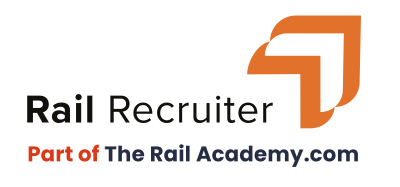2009: a new stage for the French Railway Industry Association
Posted: 12 December 2009 | | No comments yet
The environment of the French Railway Industry Association (FIF) members today has become much more complex than it was in the 80s and 90s, because France, like every European country, is currently in a long-term transition phase of its railway system. The end of the 90s marked the transition towards a new era, a transition of about 20 years and which admittedly, concerns not only France, but also, and to a similar extent, Europe.
The environment of the French Railway Industry Association (FIF) members today has become much more complex than it was in the 80s and 90s, because France, like every European country, is currently in a long-term transition phase of its railway system. The end of the 90s marked the transition towards a new era, a transition of about 20 years and which admittedly, concerns not only France, but also, and to a similar extent, Europe.
The environment of the French Railway Industry Association (FIF) members today has become much more complex than it was in the 80s and 90s, because France, like every European country, is currently in a long-term transition phase of its railway system.
The end of the 90s marked the transition towards a new era, a transition of about 20 years and which admittedly, concerns not only France, but also, and to a similar extent, Europe.
To a great extent, the current development in Europe is due to the impetus given by the European Union, marked by the adoption and implementation of new guidelines, as well as the ‘railway packs’ in the making which have and are going to profoundly alter the rules of the game – all of this with two major objectives: harmonisation and deregulation.
In France, some new players have appeared on the scene or have considerably evolved, including:
- RFF (French Rail Network) which was created in 1997 and is increasingly assuming its role towards the SNCF operator, along with some ‘new operators’
- The regions, whose AOT (Public Transport Authority) role since 1997 has become significant for railway transport
- The RATP (Paris Public Transport System) who is developing its perimeter by expanding in France and abroad, in expectation of European guidelines currently in preparation
- Built-up areas which, along with the resurgence of the urban guided transport on steel-rimmed or rubber tyres, have also played an important role since the mid-90s
- Some new players have appeared more recently on the scene: certain institutional railway actors, the French Railway Safety Authority (EPSF) and imminently the Railway Activities Regulatory Authority. Among others; private, railway freight operators, today medium and long-distance, eventually nearby, rolling stock leasing companies, competing French or foreign engineering firms of the traditional engineering operators
Within the ‘industrial’ network, relations between order-placer integrators and equipment manufacturers for rolling stock have become strained, characterised by strong pressure over selling prices and by an ever more demanding purchasing policy, as well as increased quality controls.
In the field of infrastructure, the trend is to develop integrated contracts within the profession.
The arrival of new industrial players from the motor industry, the aeronautics sector and the ITC sector have begun work with a strong strategy developing the railway market from this moment on. This is also related to a European level or even sometimes on a worldwide scale.
Nowadays, the railway industry in France is characterised by a sustained growth outlook over the next few years, despite an increase of financial restrictions and omnipresent international competition.
On the positive side, strong growth in investments at SNCF has been noticed along with regions and built-up areas, plus the RATP and RFF have started to gain power and influence. What is more, the political, economic and social climate should contribute to strengthen the positive image of the railway as a form of stimulation and sustainable development.
On the negative side, there is competition from Asia along with the critical financial situation of the French railway system and also the relatively modest or even inadequate size of a number of French railway equipment manufacturers.
In this context, marked by the globalisation of competition and by the technical and regulatory harmonisation within the European Union, the missions of watchfulness and actions of FIF have been strongly strengthened and diversified.
From this point forward, traditional missions – which are the role of the spokesperson of the profession – support implementation of a more favourable public investment effort for rail transport, and dissemination of statistics and economic news of the profession are being added, including:
- A role of structured information and direction of its members in the field of technical harmonisation and of European regulations, including connected R&D plans, and correspondingly, interfacing with European authorities, especially UNIFE, necessary cooperation with other national federations which have developed
- A role of economic analysis and support of its members worldwide, which includes organisation of informational seminars or meetings upstream for different target countries and more downstream, organisation of bilateral seminars in these countries
- A supporting role in an intensified dialogue within the railway industry in order to help make it more competitive (contractual philosophy, establishment of new systems of reference, feedback and knowledge management) as part of a growing partnership with trade organisations representing sectors such as mechanics, the electrical and electronic industries, and public works with which joint interests exist
Starting from all of these elements, FIF has set four major expectations for the next three years:
1. Stepping up its action of promotion and valuation of the industry within the context of the Grenelle Environment. Rail transport as one of the solutions in major society concerns:
- Enhancing the status of the careers within the profession and their results/performances with the media and the authorities
- Highlight the key-role of railway transport in reviving the economy
- Highlight the important results of European cooperation over major railway issues (mutual recognition, ERTMS, Railway Testing Centre, etc)
2. Playing a part in the competitiveness of the French and European railway industry by speeding up European regulation harmonisation by making the regulations, normalisation and certification procedures more efficient and more in-line with the competitiveness requirements of the railway sector (standardisation, simplification, cost reduction and deadlines, etc.) and by strengthening the industrial position
3. Helping businesses with regard to their clients/partners or competitors around the world (with better knowledge of industrial strategies of certain countries, symposiums, etc.), and on a national level (by developing an FIF/SNCF/RFF joint, strategic thinking on a specific topic), by helping with developing competitiveness of the national railway system, and by developing synergies with the internationally-oriented competitive cluster (i-trans) and with other trade organisations and railway associations
4. Expanding the existing railway training from the viewpoint of current and future human resource needs within the railway industry by participating in defining the guidance of the railway Master’s degree, by assuring the promotion of railway training adapted to the future needs of manufacturers of the sector
Conclusion
In summary, from this point on FIF is focusing on new expectations within the context of a fully recognised contribution of rail transport to sustainable development, and also in that of the economic crisis: answering the challenges of ‘making growth green’, speeding up European railway cooperation and satisfaction of the future needs of a sector undergoing massive changes currently confronted with the globalisation of markets.






